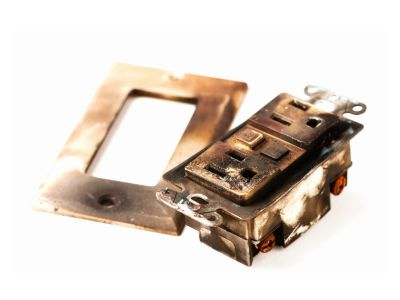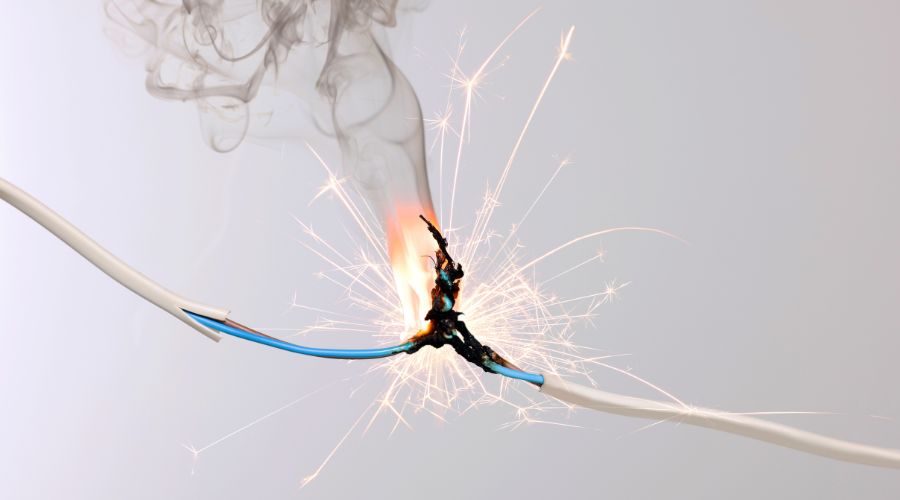Spot Problems With the Electrical Wiring to Keep the Home Safe
When it comes to electrical safety, recognizing faulty wiring early is essential for preventing fire hazards and system failure. This guide highlights the warning signs and dangers of deteriorating or outdated electrical wiring, offering practical solutions that promote long-term safety and peace of mind. Faults in a home’s wiring system can develop silently and pose serious risks if left unaddressed.
Signs to Repair or Replace the Wiring
 Early detection of electrical wiring problems can help avoid hazardous conditions. Frequent circuit breaker trips often indicate an overloaded or deteriorating system. These disruptions occur when circuits carry more electrical current than their design allows, signaling that internal components may be compromised.
Early detection of electrical wiring problems can help avoid hazardous conditions. Frequent circuit breaker trips often indicate an overloaded or deteriorating system. These disruptions occur when circuits carry more electrical current than their design allows, signaling that internal components may be compromised.
Discoloration or scorching on outlets, warm outlet covers, or unusual buzzing noises around switches and outlets are clear signs of excessive heat or faulty connections. These symptoms often point to arcing electricity or loose terminals. A persistent burning smell, especially one resembling melting plastic, frequently suggests that insulation on internal wires is breaking down and overheating—conditions that require immediate evaluation by a licensed professional.
Flickering or dimming lights, particularly when large appliances activate, often reveal inconsistencies in power distribution. This symptom indicates that the wiring is unable to meet household demands. Additional red flags include slight electric shocks from appliances, outlets that fail to grip plugs firmly, or the presence of aluminum wiring in structures built between 1965 and 1973. Electrical fires commonly originate inside walls and spread rapidly, making prompt intervention and regular system evaluations critical for ongoing safety.
Dangers of Faulty Wiring
 Deteriorated or poorly installed wiring presents serious threats that go beyond minor electrical inconveniences. Damage to insulation or connections increases the risk of electrical fires, which remain one of the leading causes of residential property damage and injury. Data from the National Fire Protection Association reports that electrical failures or malfunctions lead to approximately 51,000 fires annually in U.S. homes, with significant casualties and financial loss.
Deteriorated or poorly installed wiring presents serious threats that go beyond minor electrical inconveniences. Damage to insulation or connections increases the risk of electrical fires, which remain one of the leading causes of residential property damage and injury. Data from the National Fire Protection Association reports that electrical failures or malfunctions lead to approximately 51,000 fires annually in U.S. homes, with significant casualties and financial loss.
Among the most common culprits are overloaded circuits. When multiple appliances or high-demand devices operate on a single circuit, the resulting heat from excess electrical current can melt insulation and ignite nearby materials. Homes with outdated wiring systems—such as knob-and-tube or aluminum—face even greater risks due to outdated safety standards and material limitations.
Loose or deteriorating connections may cause electrical arcing, which can produce temperatures exceeding 10,000°F—more than enough to spark ignition in surrounding materials. In areas near water, faulty wiring also presents serious electrocution hazards. Handling these conditions without proper training can be deadly, which is why expert inspection and repair are always the recommended course of action when wiring issues arise.
The Risks of Aluminum Wiring
Aluminum wiring, commonly used in residential construction between 1965 and 1973, is now recognized as a high-risk material due to its poor long-term performance. Though originally installed as a cost-effective substitute for copper, aluminum wiring has been linked to significantly higher fire risk. Research from the Consumer Product Safety Commission shows that homes wired with aluminum are up to 55 times more likely to develop fire hazard conditions compared to those with copper wiring.
The issue stems from aluminum’s tendency to expand and contract with changes in temperature. This thermal movement causes terminals and connections to loosen over time, generating resistance and heat—especially at outlets, switches, and junction boxes. Oxidation further exacerbates the problem, forming high-resistance barriers that can cause dangerous overheating.
In homes constructed during the aluminum wiring era, professional assessment is crucial. Electricians can identify aluminum wiring by inspecting panels and connection points. Although full replacement with copper provides the safest long-term fix, cost-effective options exist. One approved method, known as “pigtailing,” involves joining copper wires to existing aluminum wires using special connectors and anti-oxidation compound. This technique significantly reduces fire risk without requiring full system replacement.
Whether through pigtailing or complete rewiring, correcting aluminum wiring should be considered a top safety priority in older homes.
About Allsource Electrical Technologies
Allsource Electrical Technologies is an expert electrical contractor serving the area of Houston, TX, and beyond. They offer the latest technology, straightforward pricing, and on-time services. Call them for electrical wiring repair and replacement services in Houston, TX.


Claire1487 says:
https://shorturl.fm/A7cYH